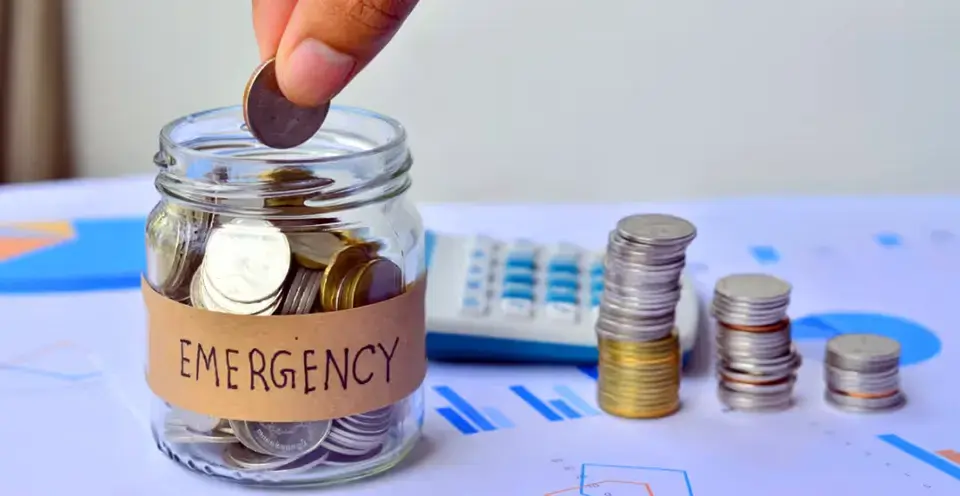
Building Your Safety Net: How to Create an Emergency Fund When Money is Tight.
Life can throw unexpected punches. A sudden job loss, a car repair, or a medical bill can leave you feeling stressed and worried, especially when money is already tight.
That's where an emergency fund comes in. It's like a financial safety net that can catch you when things go wrong.
You might be thinking, "How can I save money for emergencies when I barely have enough for everyday things?" It might seem difficult, but it's definitely possible. Building an emergency fund, even a small one, can give you peace of mind and prevent you from going into debt when the unexpected happens.
Why is an Emergency Fund So Important, Especially When Money is Tight?
When you're living paycheck to paycheck, an unexpected expense can feel like a huge crisis. Without an emergency fund, you might have to:
- Borrow money: This can lead to high-interest loans or getting into debt with friends and family.
- Use credit cards: This can quickly rack up debt that's hard to pay off.
- Sacrifice essential needs: You might have to choose between paying rent and fixing your car, for example.
Having even a small emergency fund can help you avoid these difficult situations. It gives you a cushion to fall back on, allowing you to handle unexpected costs without disrupting your regular finances.
Steps to Build Your Emergency Fund on a Tight Budget:
Building an emergency fund when money is scarce requires a bit of planning and discipline. Here's a step-by-step guide to get you started:
1. Set a Small, Achievable Goal:
You don't need to aim for thousands of dollars right away. Start with a much smaller goal, like $100 or $250. This will feel more achievable and give you a sense of accomplishment when you reach it. Once you hit your initial goal, you can gradually increase it. A good long-term goal is to have 3 to 6 months' worth of essential living expenses saved, but don't let that number overwhelm you at the beginning.
2. Track Your Spending:
The first step to saving money is understanding where your money is currently going. For a week or two, keep track of every single expense, no matter how small. You can use a notebook, a spreadsheet, or a budgeting app for this. Once you have a clear picture of your spending habits, you can identify areas where you can cut back.
3. Create a Simple Budget:
Based on your spending habits, create a simple budget. This is just a plan for how you will spend your money each month. Prioritize essential expenses like rent, food, and transportation. Then, look at non-essential spending like entertainment, eating out, and subscriptions.
4. Find Ways to Cut Expenses:
This is where you'll need to get creative. Even small cuts can add up over time. Here are some ideas:
- Reduce eating out: Cook more meals at home. Pack your lunch instead of buying it.
- Cut back on entertainment: Look for free or cheaper activities, like going for a walk, visiting the library, or having a movie night at home.
- Review subscriptions: Cancel any subscriptions you don't use regularly.
- Lower your energy bills: Turn off lights when you leave a room, unplug electronics when they're not in use, and consider adjusting your thermostat.
- Look for cheaper alternatives: Can you find a cheaper phone plan, internet provider, or insurance?
- Delay non-urgent purchases: Think carefully before buying something new. Do you really need it right now?
5. Look for Opportunities to Earn Extra Income:
Even a small amount of extra money can significantly boost your savings. Consider these options:
- Sell unwanted items: Go through your home and sell clothes, electronics, or furniture you no longer need. You can use online marketplaces or local classifieds.
- Take on small side jobs: Offer services like pet sitting, babysitting, or tutoring.
- Freelance work: If you have specific skills, like writing, editing, or graphic design, you can find freelance work online.
- Ask for a raise (if appropriate): If you feel you deserve it, research industry standards and have a conversation with your employer.
6. Automate Your Savings:
Once you've identified money you can save, make it automatic. Set up a recurring transfer from your checking account to a separate savings account every payday. Even a small amount, like $10 or $20 per week, can make a difference over time. Automating your savings makes it easier to stick to your plan because you don't have to actively think about it each time.
7. Use Windfalls Wisely:
If you receive any unexpected money, like a tax refund, a bonus at work, or a gift, consider putting a portion or all of it into your emergency fund. These unexpected amounts can help you reach your goals faster.
8. Be Patient and Persistent:
Building an emergency fund on a tight budget takes time and effort. Don't get discouraged if you don't see huge progress right away. Celebrate small milestones and keep reminding yourself why you're doing this. Consistency is key. Even saving a little bit regularly is better than not saving at all.
Where Should You Keep Your Emergency Fund?
Your emergency fund should be kept in a safe and easily accessible place, but separate from your everyday spending money. Good options include:
- A high-yield savings account: This allows your money to grow slightly while still being easily accessible.
- A separate checking account: Make sure it's not linked to your debit card for everyday purchases to avoid accidental spending.
What Should You Use Your Emergency Fund For?
It's important to define what constitutes a true emergency. Your emergency fund is for unexpected, necessary expenses that you couldn't have planned for, such as:
- Job loss: To cover essential living expenses while you look for a new job.
- Medical bills: For unexpected doctor visits, prescriptions, or hospital stays.
- Car repairs: To fix your car so you can get to work or other essential places.
- Home repairs: For urgent repairs like a leaking roof or a broken water heater.
Your emergency fund is not for things like vacations, new gadgets, or sales. Try to resist the temptation to dip into it for non-emergencies.
Conclusion:
Building an emergency fund when you're on a tight budget might seem like a daunting task, but it's an incredibly important step towards financial security.
By setting realistic goals, tracking your spending, finding ways to cut costs, and being persistent, you can create a safety net that will protect you from the financial stress of unexpected events.
Start small, stay focused, and remember that every little bit you save brings you closer to a more secure financial future.
Leave a comment
Your email address will not be published. Required fields are marked *


